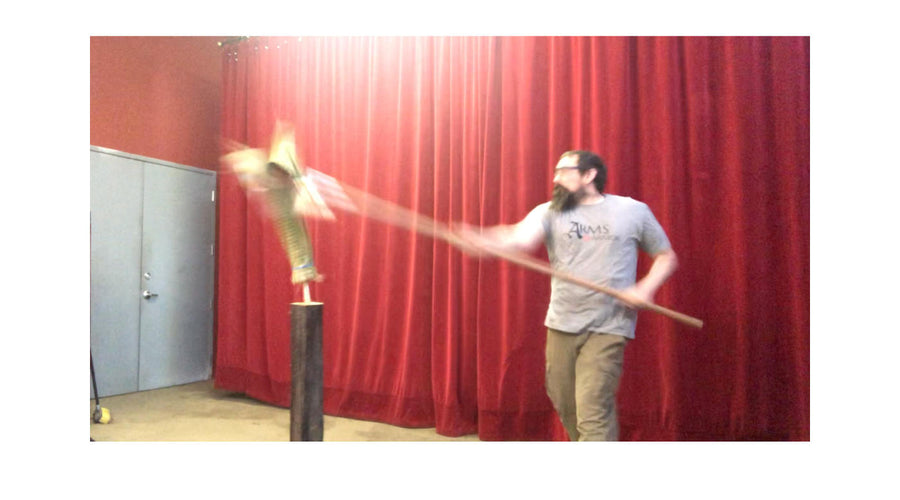HEMA
Our first Renaissance Festival since COVID
This past weekend was the first live event that we have officially attended since the advent of the plague, and it fe...
Anglo-Saxon Sword Spotlight
Our Anglo-Saxon Sword is a great example of the type of weapon wielded by the warriors of the late 10th and early 11...
Medieval Longword Edge Sharpness
Today we will look in detail at a specific surviving longsword's edge and how sharp such a sword would have been in p...
One or Two Handed? - Hungarian Sword Q & A
In our Hungarian Sword Spotlight we mention a few things that folks had some good questions about. So we thought it w...
Hungarian Sword Spotlight
The Arms and Armor Hungarian Sword is an Oakeshott type XI blade based on an original sword from the early 13th centu...
Medieval Sword Edges, how sharp?
When we look at the functionality of a sword, the edge and point are the only reason the rest of the piece exists. As...
Does Cutting Wood With a Sword Teach Us Anything?
There are periodic debates among sword lovers about what kinds of abuse a sword should be able to survive. On the one...
12th Century Spear Spotlight
The early Medieval period was a time when most armies and soldiers carried spears. They were excellent weapons for c...
What kind of finish did a medieval sword blade have? pt2
The last steps of making a sword blade are the finish polish and edging. In part 1 of this theme, we looked at the u...
Cutting with an English Bill
Today we put an Arms and Armor English Bill through its paces. The English Bill is a 16th century pole arm that was ...
The Polish Saber its history and impact
No sword is ever created in a vacuum. This goes for any weapon or armor for that matter. This fact is one of the most...
How were Medieval scabbards made? - a new resource
Here at Arms and Armor we are always on the look out for new research and resources on historical weapons. Over the d...












